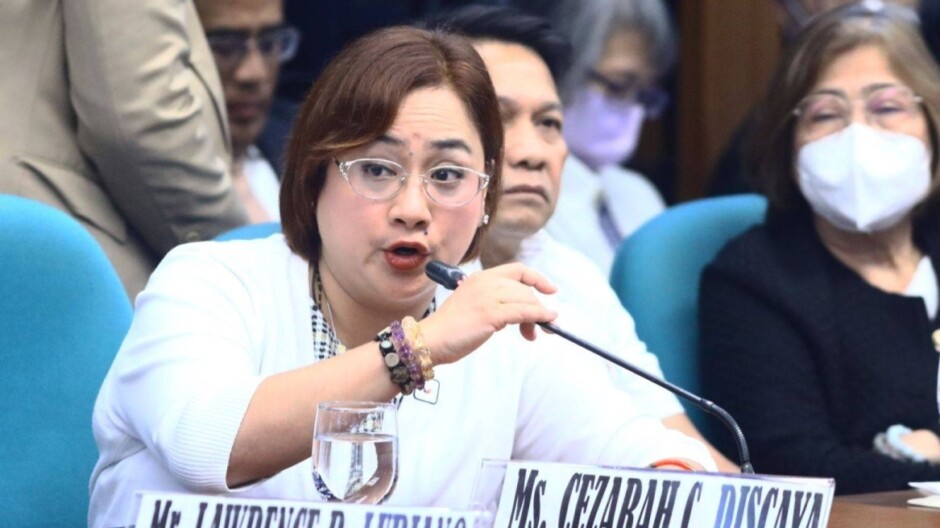PUBLIC OUTRAGE ERUPTS: Children of Alleged Corrupt Officials Flaunt Lavish Lifestyles While Filipinos Drown in Floods
A Tale of Two Realities
As millions of ordinary Filipinos wade through rising floodwaters, clutching their belongings and praying their homes will not be swept away, a completely different scene plays out on social media.
On one side of the screen: families in evacuation centers, children wrapped in damp blankets, parents staring helplessly at submerged crops and ruined livelihoods. On the other side: the children of politicians and businessmen accused of corruption, showing off helicopter landings in their backyards, glittering mansions with private elevators, and tables overflowing with imported food.
The contrast is not just painful. It is enraging.
This story is not merely about wealth. It is about the alleged misuse of public funds—the people’s money—turned into symbols of extravagance. It is a story that has become a slap in the face of every hardworking taxpayer.

The Social Media Firestorm
The scandal began when a series of viral posts showcased snippets of luxury lifestyles enjoyed by the children of several prominent figures.
One clip showed a helicopter landing casually in a suburban backyard, with the owner’s teenage son stepping out, grinning as if it were the most normal thing in the world. Another showed a mansion, grander than most five-star resorts, complete with a private food elevator—a detail that instantly became a meme across the internet.
Screenshots of luxury bags, European vacations, and exotic cars followed, each more brazen than the last. And soon, investigators and netizens alike began asking: where did the money come from?
The Allegations
Whispers quickly turned into accusations.
Several of the families linked to these displays of wealth are under scrutiny for corruption cases—cases that involve misuse of government funds, questionable contracts, and allegations of pocketing money intended for disaster relief, infrastructure, and basic services.
The suggestion is chilling: while ordinary Filipinos struggled to rebuild lives after typhoons, while farmers prayed for aid after losing harvests, while teachers begged for school supplies, public money was allegedly being funneled into helicopters, luxury mansions, and obscene displays of privilege.
A Nation in Pain
For the ordinary Filipino, floods are not just natural disasters—they are a cycle of suffering. Every rainy season brings with it the dread of evacuation, the loss of homes, and the struggle to find enough food.
It is in this context that the scandal struck hardest. To see children of the powerful flaunting their privilege while the nation literally drowned was unbearable.
“Mabigat sa loob,” one mother said tearfully in an interview. “We work so hard, we pay taxes, we lose everything in the floods—and this is what happens? They take our money for their luxuries?”
Her words echoed across radio programs and talk shows, repeated by commentators who themselves could not hide their outrage.
The Symbolism of the Helicopter

Among the images, one stood out: the helicopter.
For many Filipinos, helicopters are not symbols of convenience but of emergency rescue. During disasters, people look to the skies hoping to see a helicopter carrying aid. Yet here was a helicopter, not delivering relief to flooded villages, but dropping a privileged teenager off in the comfort of his private mansion.
It was a metaphor too powerful to ignore: while the poor wait for rescue, the rich play with their toys.
Voices of the People
Across platforms, ordinary citizens poured out their anger.
On Twitter (X), hashtags like #CorruptionLuxury and #HelicopterKids trended for days.
On Facebook, impassioned essays dissected how systemic corruption robs people of basic dignity.
On TikTok, creators edited side-by-side videos: one half showing flooded barangays, the other showing the luxurious lifestyles of the so-called “princes and princesses” of corruption.
Comments flowed with raw emotion: “We are the ones drowning, they are the ones flying.” Another wrote, “The food elevator in their mansion comes from the rice we can no longer afford.”
A History of Scandals
This is not the first time the Philippines has been rocked by revelations of elite excess. From the infamous shoes of Imelda Marcos to modern-day exposés of ghost projects and kickbacks, the story of corruption has repeated itself like a curse.
What makes this scandal sting deeper is its timing. It emerges not in an era of growth, but in an era of hardship—where inflation bites, disasters worsen, and trust in institutions erodes.
Experts Speak Out
Political analysts say the scandal highlights the widening gap between the ruling class and ordinary citizens.
“This is not just about one helicopter or one mansion,” one expert said. “It is about a system that allows public officials and their families to enrich themselves while the majority suffer. Social media simply makes it harder to hide now.”
Economists added that every peso lost to corruption is a peso stolen from healthcare, education, and disaster preparedness—the very things Filipinos desperately need.
Government Response
So far, government officials have issued statements promising investigations. Some lawmakers have demanded lifestyle checks. Others have called for stricter transparency laws.
But for many Filipinos, these promises ring hollow. “We have heard this before,” one taxi driver remarked. “They investigate, they talk, but in the end, nothing happens. Meanwhile, the rich get richer, and we keep drowning.”
The skepticism is widespread, rooted in decades of broken promises.
The Emotional Weight
Beyond politics and economics, the scandal has pierced the emotional core of the nation. It is not just about policy; it is about dignity.
For a country that values family, sacrifice, and resilience, the sight of privileged children mocking that very struggle feels unforgivable. It is a betrayal not just of trust, but of shared humanity.
One viral comment summed it up: “We are not angry because they are rich. We are angry because their wealth comes from our suffering.”
A Call for Change
Civil society groups, youth organizations, and church leaders have begun mobilizing. Rallies are being planned. Campaigns for stricter accountability are gaining traction.
What began as outrage online is slowly transforming into a movement offline—a demand for justice, for dignity, and for a government that truly serves its people.
Conclusion: A Nation Watching
The story of helicopters and mansions is not just tabloid gossip. It is the mirror of a nation grappling with inequality, corruption, and the eternal struggle for justice.
The Filipino people have shown resilience in the face of typhoons, earthquakes, and pandemics. But resilience should not mean acceptance of abuse.
As this scandal unfolds, one truth is clear: the people are watching. The children of privilege may fly in their helicopters, but the voices of the masses rise higher still. And they demand one thing above all—justice.

